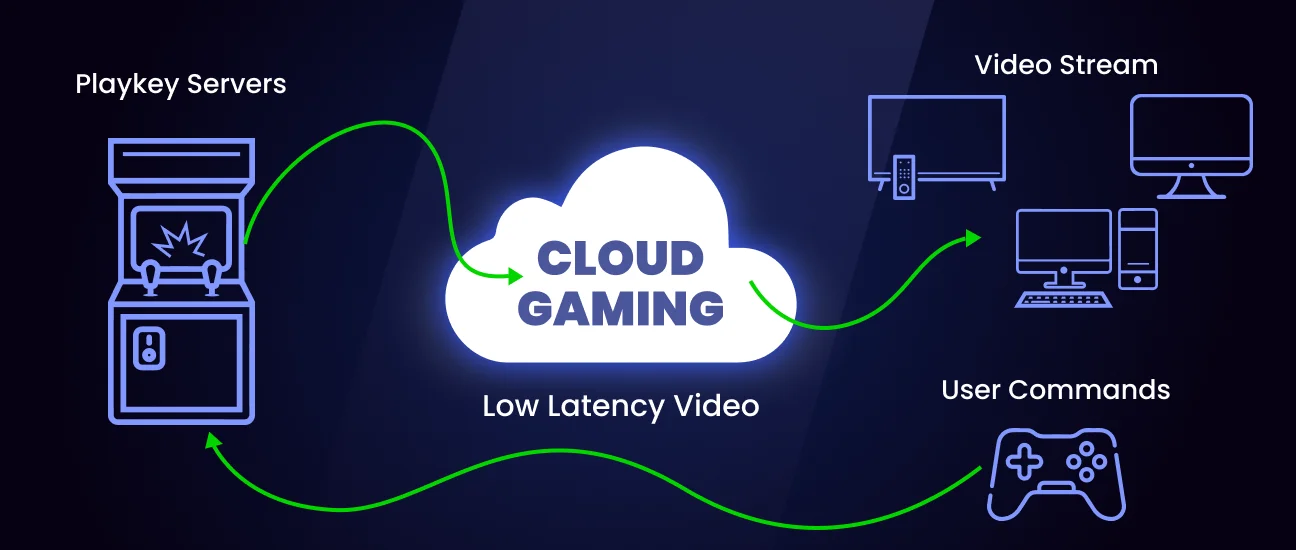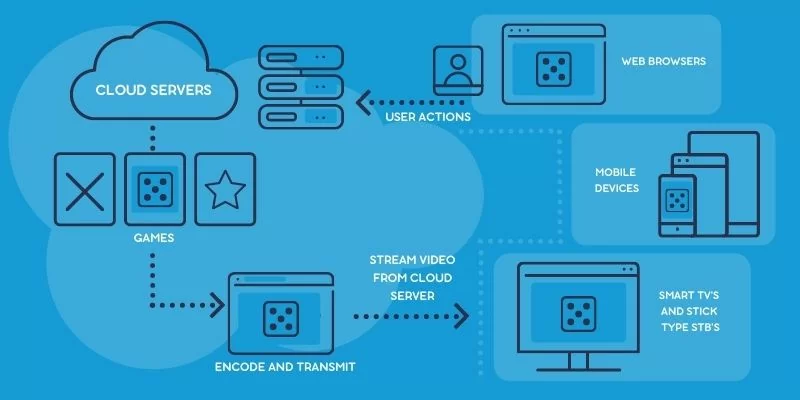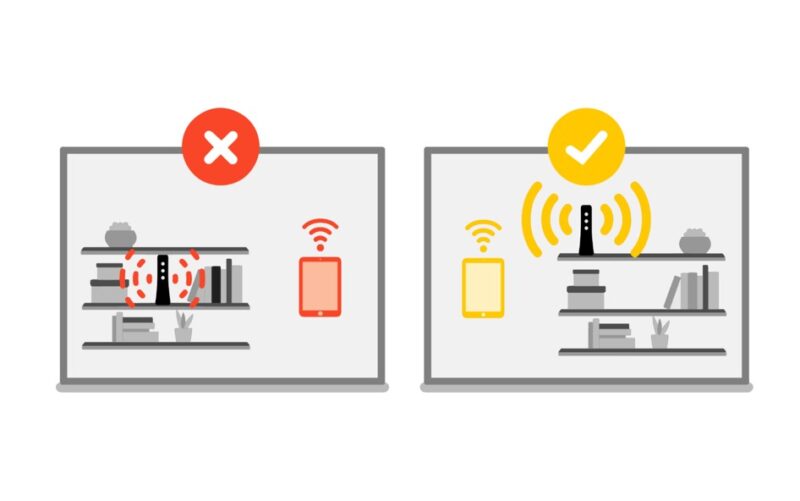The age-old gaming argument of PC vs. console is giving way to a new debate: cloud gaming vs. console or PC. Once a futuristic novelty held back by data usage constraints, cloud gaming has evolved into a powerhouse platform, challenging the dominance of traditional gaming platforms.
With lightning-fast streaming, gargantuan game libraries, and minimal hardware requirements, today’s cloud services deliver AAA titles to nearly any device with a high-speed internet connection.
Over 295 million gamers now use cloud gaming, but is cloud gaming the future, or will consoles and PCs continue to dominate the gaming landscape? Here’s what to consider before you pick a side in the cloud gaming vs. console debate.
1. What is Cloud Gaming?

Cloud gaming lets you play video games on any internet-connected device, with no console or high-end PC required. Instead of running a game locally, the game runs on remote servers. Controller inputs are transmitted over the internet, and the server streams back real-time video of the gameplay.
Cloud gaming shifts all the heavy lifting off your device, so you’re not reliant on your system’s hardware. You can jump into the latest AAA titles on your laptop, tablet, or even smartphone without worrying about graphics card limitations or storage space. As long as you have an internet provider capable of providing a stable, high-speed connection, your entire game library is just a click (or tap) away.
2. Advantages of Cloud Gaming
Cloud gaming offers three enormous perks: cost savings, portability, and access.
Cost Savings
With cloud gaming, you no longer need to invest in expensive consoles, high-end gaming PCs, and future hardware upgrades. Remote cloud servers handle all the work, delivering top-tier performance without breaking the bank.
Portability
Cloud gaming allows you to play from anywhere with a reliable internet connection. You can pick your game up where you left off on almost any screen, including laptops, tablets, smart TVs, and smartphones. Whether you go, your whole game library travels with you.
Accessibility
Speaking of libraries, cloud platforms grant instant access to hundreds or even thousands of titles. No more waiting for downloads, installing patches, or hunting down physical discs. Just browse the catalog, hit “play,” and dive straight into your next adventure.
Keep in mind, you need a good internet speed for cloud gaming. Ideally, you need speeds of 15–25 Mbps or higher for HD streaming and under 50 ms of latency. When your connection meets these benchmarks, cloud gaming delivers unbeatable convenience and value.
3. Limitations and Challenges

Convenient though cloud gaming is, it does come with a few potential disadvantages:
Internet Connection Issues
Cloud gaming relies on a strong, stable internet connection. Fluctuating bandwidth or network congestion can lead to buffering interruptions, dropped streams, or automatic quality downgrades. In rural or underserved areas where high-speed broadband isn’t available, cloud gaming may simply not be an option.
Latency and Lag
Even milliseconds of delay between your controller input and on-screen action can throw off timing in fast-paced shooters or competitive games. Although data centers are expanding to reduce round-trip times, serious gamers still prefer local hardware for the most responsive experience.
Graphics Quality
To maintain smooth playback, cloud services sometimes compress video streams, resulting in slightly softer textures or reduced frame rates compared to a high-end console or gaming PC.
Local Licensing Barriers
Not every cloud platform launches worldwide simultaneously. Local distribution rights may restrict access to certain titles. Subscription costs can vary by region as well, so be sure to check which services and games are accessible in your area before making the jump to a console-free setup.
4. Console Gaming: Why It Still Matters

Despite the increased popularity of cloud gaming, traditional consoles still have their place. Ownership and the ability to play offline are undeniable perks. When you buy a console and games, you can play anytime, regardless of your internet connection or service subscription status.
Consoles deliver consistent performance and graphics capabilities so that you can enjoy native 4K resolution, high frame rates, and the full visual fidelity developers intended, without interference from pixelation, blurring, or dynamic bitrate changes.
For long-time gamers, consoles with backward compatibility are a way to keep treasured older games alive. Many modern systems let you play classics from previous generations, preserving decades of investment in physical and digital game collections.
5. Cloud Gaming vs Console: What’s Best for You?
When choosing cloud gaming vs console, consider your budget, internet reliability, and personal play style. If you value high-end graphics, offline play, and a personal library of physical or digital titles, a console remains the clear winner. Consoles deliver consistent performance without worrying about lag, and you retain permanent access to your games.
If, however, you value portability, lower upfront costs, and the ability to switch devices on the fly, cloud gaming is a great choice. Without the need for regular hardware upgrades, you only need a stable broadband connection to enjoy the latest AAA releases. Remember that streaming quality and responsiveness depend heavily on your internet speed and local data center availability. You may also want to look at increasing your home wifi signal to get the most out of cloud gaming’s portability.

Is Cloud Gaming the Future?
So, is cloud gaming the future? While cloud gaming may one day replace consoles, the most likely outcome at the moment is a hybrid model that combines consoles for at-home play with cloud options for on-the-go streaming. Many platforms already offer downloadable game libraries and cloud libraries under one subscription, ensuring you never miss a moment of fun.

